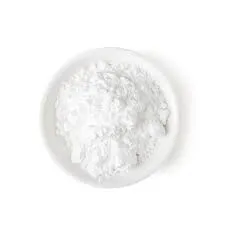Fragrance Additives for Plastics Enhancing Aesthetics and Functionality
In an era where consumer preferences are rapidly evolving, the demand for innovative materials that not only meet functional requirements but also appeal to the senses is more pronounced than ever. One such development is the incorporation of fragrance additives into plastics. These additives serve multiple purposes, enhancing the aesthetic appeal of plastic products while also providing additional benefits that can cater to specific market needs.
Fragrance additives are compounds added to plastics to impart a pleasant scent, effectively transforming the user experience. This application can be seen in a variety of products, from packaging materials to household items, toys, and even automotive interiors. The primary reason for using fragrance-enhanced plastics is to mask undesirable odors that may arise from the plastic itself or from the substances it may come into contact with. For instance, packaging for food items sometimes holds onto an unpleasant smell from manufacturing processes, and incorporating fragrance can help alleviate this concern, enhancing the overall perception of the product by consumers.
Fragrance Additives for Plastics Enhancing Aesthetics and Functionality
The technical incorporation of fragrance compounds into plastics is achieved using several methods, such as masterbatches, where fragrance concentrates are combined with polymer resins. This allows for even distribution throughout the plastic material, ensuring a consistent scent release over time. Additionally, advancements in technology have led to the development of microencapsulation techniques, which protect the fragrance compounds from degradation. This encapsulation ensures that the scent remains potent and is released gradually, providing sustained aroma without overwhelming the user.
fragrance additives for plastics

Aside from aesthetics, fragrance additives can also contribute to functional properties. For instance, some fragrances possess natural antimicrobial properties that can inhibit the growth of bacteria on plastic surfaces, making them ideal for applications in medical settings, kitchens, or anywhere hygiene is a concern. This functionality enhances the safety and longevity of the products, adding value not just through scent but also through practical benefits.
However, the use of fragrance additives in plastics is not without challenges. One of the primary concerns is the potential for allergic reactions or sensitivities among consumers. As a result, manufacturers must be diligent in selecting fragrance components that are safe and compliant with regulatory guidelines. Extensive testing and transparency regarding the ingredients used can help in assuring consumers of the safety of scented products.
The environmental impact of fragrance additives also warrants attention. As the industry moves towards sustainability, the sourcing and biodegradability of these additives are under scrutiny. Manufacturers are increasingly exploring natural and renewable fragrance sources, aligning their products with eco-friendly practices, which can cater to the growing consumer demand for sustainable products.
In conclusion, fragrance additives for plastics represent a multifaceted opportunity for enhancing product appeal and functionality. As our society becomes more attuned to sensory experiences, the integration of pleasant fragrances into plastic products can create significant advantages in the marketplace. Companies that innovate responsibly—addressing consumer safety, environmental concerns, and the aesthetic experience—will likely thrive in this evolving landscape. Ultimately, fragrance additives not only enhance the user experience but also embody the spirit of innovation in the plastics industry, paving the way for future advancements that prioritize both form and function.

